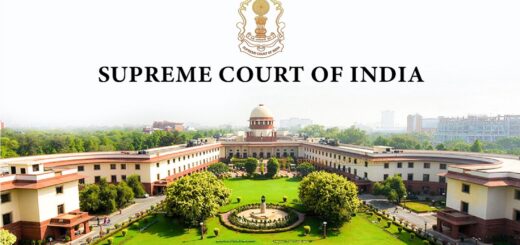Salient Feature of Indian Constitution
The Constitution of India commences with a preamble that delineates its objectives, aspirations, and fundamental principles. These objectives have significantly shaped the principal components of the Constitution. In response to the specific requirements of the nation, India’s Constitution incorporates exemplary features from various prominent international constitutions. Nonetheless, it possesses distinctive characteristics that render it unique. Enacted on January 26, 1950, the Indian Constitution is recognized as one of the longest and most comprehensive constitutions globally. It champions essential tenets such as democracy, equality, and justice, while also embodying the country’s rich tapestry of cultural, social, and historical diversity.
Synopsis:
- Lengthiest Written Constitution
- Drawn from Various Sources
- Blend of Rigidity and Flexibility
- Federal System with Unitary Bias
- Parliamentary Form of Government
- Synthesis of Parliamentary Sovereignty and Judicial Supremacy
- Rule of Law
- Integrated and Independent Judiciary
- Fundamental Rights
- Directive Principles of State Policy
- Fundamental Duties
- Indian Secularism
- Universal Adult Franchise
- Single Citizenship
- Independent Bodies
- Emergency Provisions
- Three-tier Government
- Co-operative Societies
- Lengthiest Written Constitution
There exist two primary categories of constitutions: written, exemplified by the American Constitution, and unwritten, as seen in the British Constitution. The Indian Constitution is recognized as the longest and most detailed constitution globally. Its extensive nature is attributed to the country’s vast geographical diversity and size. Additionally, the intricate Government of India Act of 1935 has significantly influenced its development. The Constitution uniquely encompasses both central and state governance, further enhancing its complexity. Legal scholars within the Constituent Assembly were instrumental in formulating this framework, and the comprehensive regulations facilitate effective governance.
- Drawn from Various Sources
A substantial portion of the provisions within the Indian Constitution were derived from various international constitutions and the Government of India Act of 1935, which contributed approximately 250 provisions. Dr. B. R. Ambedkar emphasized that a thorough examination of numerous global constitutions was undertaken to shape India’s Constitution. The Government of India Act served as a foundational element for much of the constitutional architecture. Philosophical components, such as Fundamental Rights and Directive Principles, drew inspiration from the Irish and American Constitutions, while the British Constitution influenced the political framework, including the establishment of a Cabinet system and the dynamics between the executive and legislative branches.
- Blend of Rigidity and Flexibility
There exist two primary classifications of constitutions: rigid and flexible. A rigid constitution, exemplified by the American Constitution, necessitates adherence to a defined procedure for any amendments. Conversely, a flexible constitution, such as the British Constitution, allows for modifications akin to those of ordinary legislation. The Indian Constitution serves as a notable illustration of a system that incorporates both rigidity and flexibility. The mechanisms by which a constitution can be amended are indicative of its classification as either rigid or flexible. - Federal System with Unitary Bias
The Constitution of India delineates a federal governance structure. It encompasses essential characteristics typical of a federation, including dual levels of government, a distribution of powers, a codified constitution, the supremacy of the constitution, a robust judiciary, and a bicameral legislative system. K.C. Wheare characterized the Indian Constitution as “federal in form but unitary in spirit” and referred to it as “quasi-federal.” - Parliamentary Form of Government
The Constitution of India has adopted the British Parliamentary System of Government rather than the American Presidential System. This parliamentary framework is established at both the national and state levels. Key characteristics of India’s parliamentary government include the presence of both a nominal and a real executive, governance by the majority party, collective accountability of the executive to the legislature, the requirement for ministers to be members of the legislature, leadership by the Prime Minister or Chief Minister, and the authority to dissolve the lower house (Lok Sabha or Assembly).
Although the Indian parliamentary system is primarily influenced by the British model, it exhibits several significant distinctions. For example, the Indian Parliament does not possess the same level of sovereignty as the British Parliament. Furthermore, India operates under a republican system with an elected head of state, in contrast to Britain, which maintains a hereditary monarchy.
- Synthesis of Parliamentary Sovereignty and Judicial Supremacy
The British Parliament operates under the principle of parliamentary sovereignty, whereas the American Supreme Court adheres to the doctrine of judicial supremacy. In comparison, the Indian Supreme Court possesses a more limited capacity to review legislation than its American counterpart, reflecting the distinct nature of the Indian parliamentary system in contrast to the British model. This distinction is particularly evident when examining the Indian Constitution’s provision for “procedure established by law” in relation to the American Constitution’s assurance of “due process of law” as articulated in Article 21. - Rule of Law
This concept underscores the imperfection of individuals, advocating for governance through laws rather than personal rule. Such a principle is fundamental to democratic systems. The notion that the rule of law represents the ultimate authority is of even greater significance. Fundamentally, law is rooted in customs—habits and beliefs that evolve over time within a society. Ultimately, the rule of law embodies the collective wisdom of the populace. - Integrated and Independent Judiciary
India features a unified judicial system, with the Constitution establishing an independent judiciary that is insulated from legislative and governmental influence. The apex of this legal framework is the Supreme Court.
High Courts at the state level serve as superior courts to the Supreme Court, while district courts and other lower courts are organized within the hierarchy of subordinate courts under the High Courts. As the highest appellate court, guardian of fundamental rights, and custodian of the Constitution, the Supreme Court functions as a federal court. Consequently, the Constitution incorporates various provisions designed to ensure the judiciary’s independence. - Fundamental Rights
Six Fundamental Rights are enshrined in the Indian Constitution under Part III, providing essential protections to all citizens. A cornerstone of the Constitution, these rights affirm that every individual is entitled to specific freedoms inherent to their humanity, independent of prevailing majority or minority views. Such rights are inviolable and cannot be rescinded by a majority decision. The overarching aim of these fundamental rights is to promote the principles of democratic governance.
- Right to Equality
- Right to Freedom
- Right against Exploitation
- Right to Freedom of Religion
- Cultural and Educational Rights
- Right to Constitutional Remedies
- Directive Principles of State Policy
The Directive Principles of State Policy represent a “new aspect,” as articulated by Dr. B. R. Ambedkar, and are detailed in Part IV of the Constitution. These principles were integrated into the Constitution to ensure social and economic justice for all citizens.
In accordance with the Directive Principles, the concentration of wealth in the hands of a select few is to be avoided within India’s welfare state. These principles are inherently non-justiciable. The Indian Constitution is fundamentally structured on the equilibrium between Fundamental Rights and Directive Principles, as affirmed by the Supreme Court in the Minerva Mills case (1980). - Fundamental Duties
Initially, the original Constitution did not delineate the fundamental duties of citizens. However, following the recommendations of the Swaran Singh Committee, the 42nd Amendment Act of 1976 introduced Fundamental Duties into the Constitution, enumerating ten obligations that all Indian citizens are expected to observe. An additional duty was incorporated later through the 86th Constitutional Amendment Act of 2002. While these duties represent the responsibilities of citizens, the rights are guaranteed protections afforded to the populace. - Indian Secularism
India’s Constitution establishes a secular framework for governance, thereby refraining from endorsing any particular religion as the official state religion. This principle aims to foster a secular state, which does not equate to a government that is antagonistic towards religion. Instead, the Constitution embodies the essence of secularism by ensuring that all religions are treated with equal respect and protection. - Universal Adult Franchise
The Constitution guarantees universal suffrage for elections to the Lok Sabha and state assemblies, granting every citizen aged 18 and above the right to vote, irrespective of caste, race, religion, gender, literacy, or economic status. The voting age was amended from 21 to 18 years with the enactment of the 61st Constitutional Amendment Act in 1989. - Single Citizenship
The Indian Constitution is characterized by a federal structure, incorporating both central and state governments, while providing a singular form of citizenship: Indian citizenship. This provision ensures that all citizens, regardless of their place of birth or residence within India, enjoy the same political and civil rights without any form of discrimination. - Independent Bodies
The Constitution establishes various independent institutions that operate alongside the legislative, executive, and judicial branches of both federal and state governments. These institutions are regarded as vital components of India’s democratic framework. - Emergency Provisions
The framers of the Constitution recognized the potential for situations in which the government might be unable to operate under normal conditions. To address such scenarios, the Constitution includes specific emergency provisions. In times of crisis, state governments assume full control over the federal government, which then wields absolute authority. - Three-tier Government
The Indian Constitution established a dual-tier government system, delineating the powers of both central and state authorities. However, the introduction of the 73rd and 74th Constitutional Amendment Acts in 1992 created a third tier of governance, referred to as local government, a feature not commonly found in the constitutions of many other nations. The 73rd Amendment Act of 1992 formally recognized panchayats (rural local governments) by adding a new Part IX and Schedule 11 to the Constitution. In a similar vein, the 74th Amendment Act of 1992 granted official status to urban local governments (municipalities) through the introduction of a new Part IX-A and Schedule 12. - Co-operative Societies
The 97th Constitutional Amendment Act of 2011 conferred constitutional status and protection upon cooperative societies. This amendment empowers Parliament to legislate for multi-state cooperative societies, while state legislatures retain the authority to enact laws for other types of cooperative societies.



